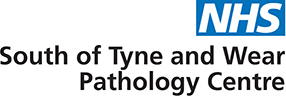ENA – Extractable Nuclear Antibodies Screen
Code:
ENA
Sample Type:
2mL Serum (Gel 5mL Yellow tube)
Ref Ranges/Units:
Negative, Weak Positive or Positive
Normal result = negative
Turnaround:
3 days
Frequency of Analysis: Daily
Special Precautions/Comments:
Interferences: None know
Method: Fluorescence Enzyme Immunoassay (FEIA). Calibration: N/A. EQA scheme: UK NEQAS scheme for Nuclear antibodies. IQC: In house preparation
Interpretation: Results are reported as NEGATIVE, WEAK POS or POSITIVE. ENA screen results are Compared with HEP IIF results if available. Individual ENA types are performed if the ENA screen is positive. The test should not be relied upon as the only diagnostic tool and must be used in conjunction with evaluation of clinical symptoms and other evidence.
Additional Information:
Indication: Connective tissue disease, systemic lupus erythematosus (SLE), Sjogren’s syndrome.
Background Information: The detection of antinuclear antibodies (ANAs) has long been an important tool in the diagnosis of systemic rheumatic diseases. The antigens used in their detection are purified by the saline extraction of human or animal nuclei, this has led to them being called extractable nuclear antigens (ENA). The most commonly measured ENA specifications are anti-SS-A/Ro, anti-SS-B/La, anti-Sm, anti-Sm/RNP anti-Jo-1 and anti-SCL-70. Individual ENA types are performed by line blot if the ELISA ENA screen is positive. Ro and La are a heterogeneous antigenic complex made up of 52 kDa Ro, 60 kDa Ro and four small RNA particles [1]. Anti-Ro are the most common ENA specificity amongst autoimmune diseases. They can be seen in Sjogren’s syndrome, SLE, cutaneous lupus erythematosus, neonatal lupus and primary biliary cirrhosis [1]. Anti-La (SS-B) antibodies are found mainly in Sjogren’s syndrome and sometimes in SLE [1]. Anti-Sm (Smith) antibodies are specific for SLE (5-30%) and are more prevalent in Afro-carribeans [2]. Anti-RNP antibodies can be seen in mixed connective tissue disease with a lower frequency in SLE [2]. These antibodies are associated with a positive coarse speckled antinuclear antibody. Anti-Scl-70 antibodies are found in progressive systemic sclerosis and in limited scleroderma [3]. Anti-Jo-1 antibodies are specific for adults with autoimmune myositis and idiopathic inflammatory myopathies [4]. The antinuclear antibody result is usually negative although a faint cytoplasmic staining may be seen.
References: Damosieaux JGMC, Cohen Tervaert JW. From ANA to ENA: How to proceed? Autoimmunity Reviews. 2006. 5:10-17. Franceschini F, Cavazzana I. Anti-Ro/SSA and La/SSB antibodies. Autoimmunity. 2005. 38(1):55-63. [Ref 1] Basu D, Reveille JD. Anti-scl-70. Autoimmunity. 2005. 38(1):65-72. [Ref 3] Migliorini P, et al. Anti-Sm and anti-RNP antibodies. Autoimmunity. 2005. 38(1):47-54. [Ref 2] Zampieri S, et al. Anti-Jo-1 antibodies. Autoimmunity. 2005. 38(1):73-78. [Ref 4] Kavanagh AF, Solomon DH. Guidelines for immunologic laboratory testing in the rheumatic diseases:anti-DNA antibody tests. Arthritis and Rheumatism. 2002. 47(5):546-555. Egner W. The use of laboratory tests in the diagnosis of SLE. Journal of Clinical Pathology. 2000. 53:424-432
See Also: ANA; ENA Specifics
Telephone Gateshead Lab: 0191.4456499 Option 4, Option 1


